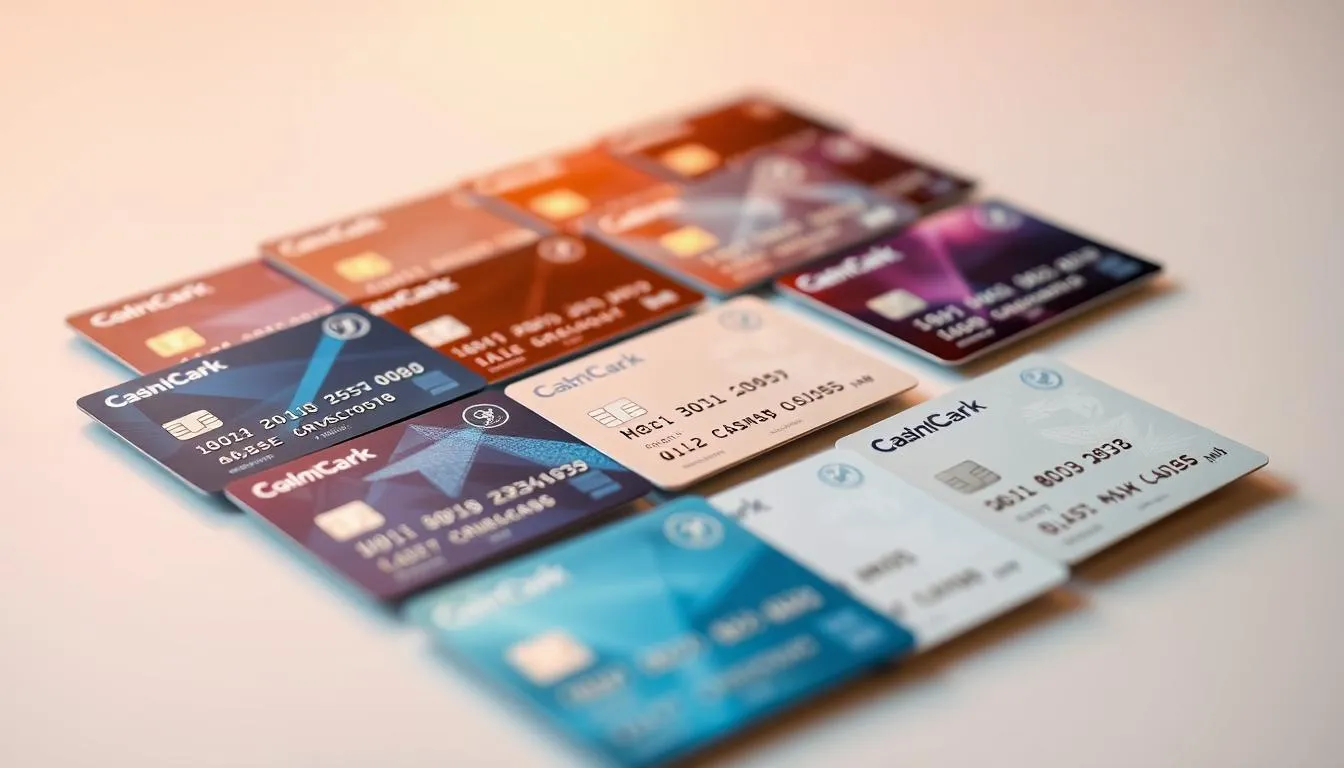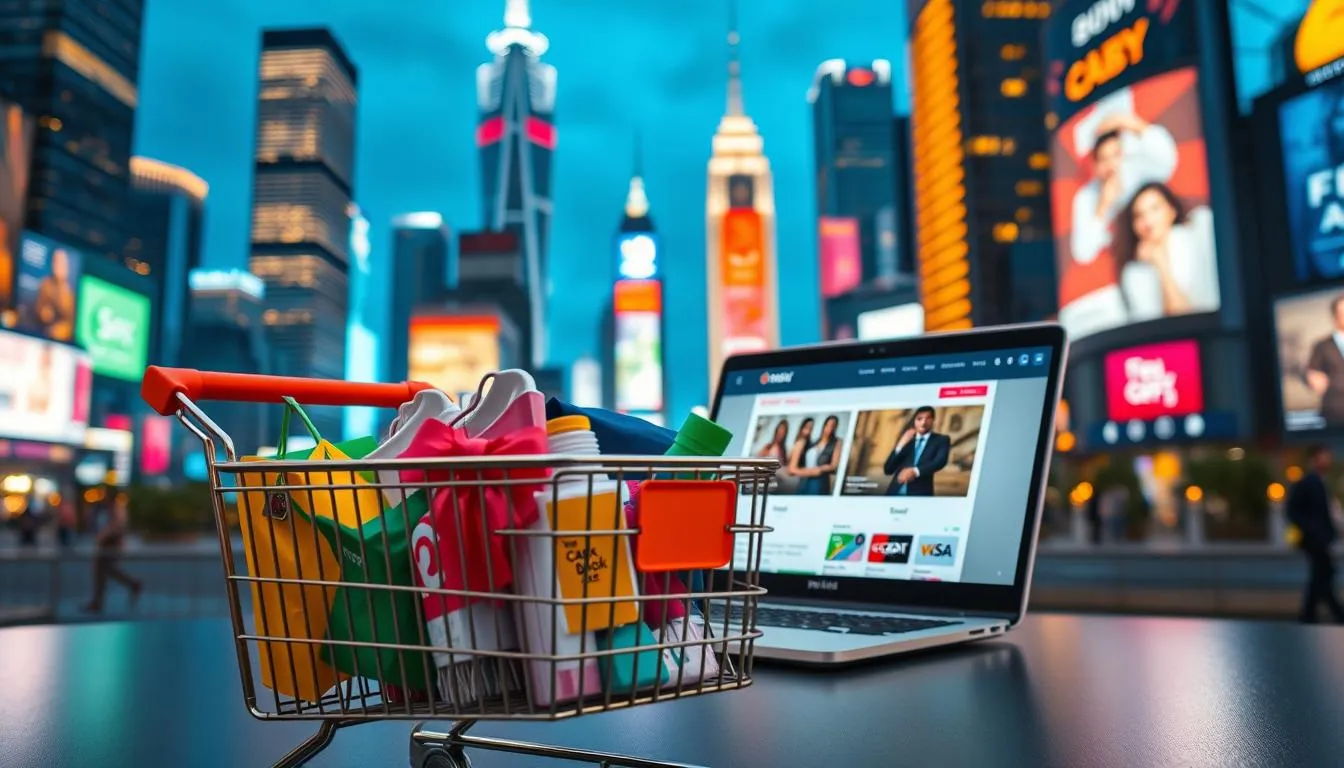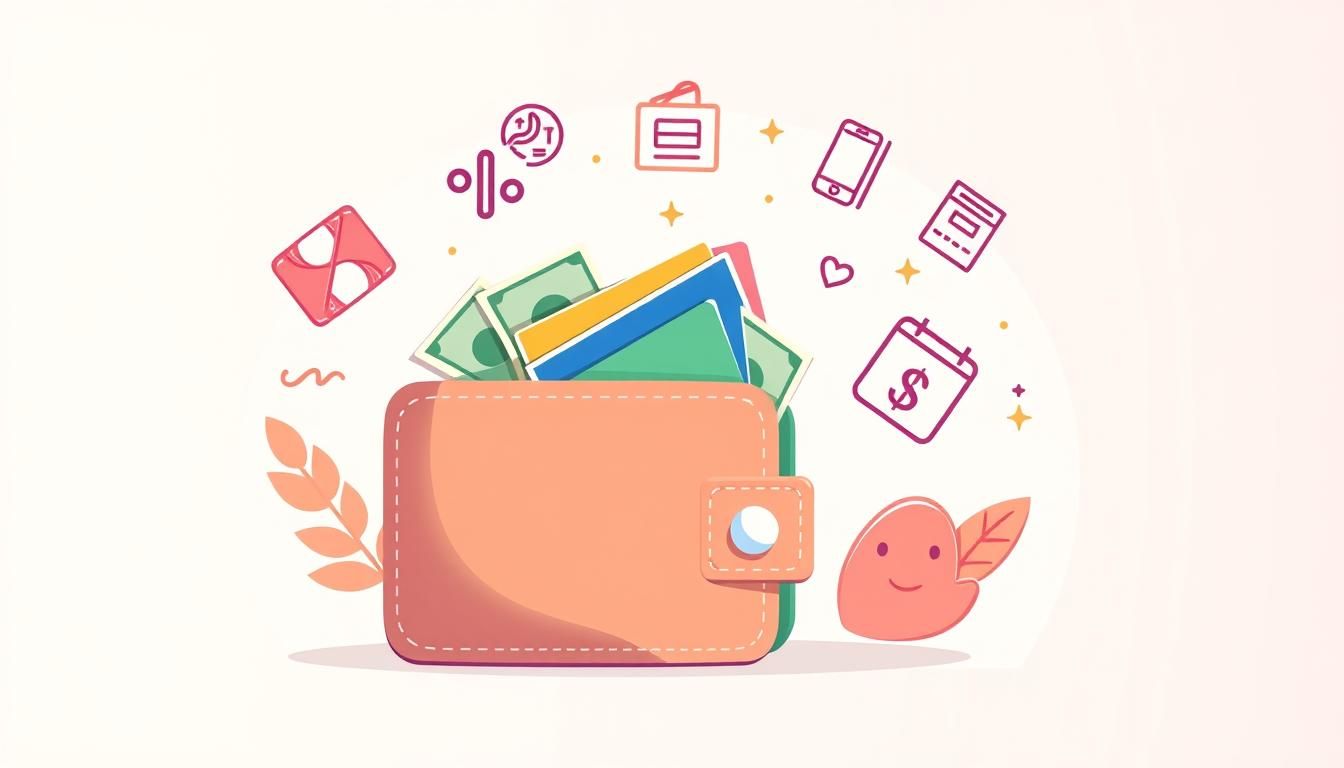Remember that rush of excitement when you find an unexpected $20 bill in your old jeans? Now imagine feeling that every time you make a purchase. For many Americans, that thrill has become reality through modern reward systems – but most aren’t maximizing their potential.
A recent study reveals 85% of U.S. shoppers prioritize programs that give money back on everyday spending. Unlike fleeting discounts, these systems let you keep earning while buying what you already need. Think of it as your regular grocery run quietly funding your next weekend getaway.
This guide isn’t about cutting coupons or sacrificing lattes. We’ll show how savvy shoppers and business owners alike create mutually beneficial relationships with brands. You’ll learn why certain loyalty programs outperform others and how to spot hidden opportunities in your current spending habits.
Key Takeaways
- Modern reward systems rank among consumers’ top loyalty drivers
- money-back offers boost repeat purchases by 30% for businesses
- Strategic program selection can fund vacations or debt payments
- Combining credit card perks with retailer programs maximizes returns
- Transparent terms separate valuable programs from marketing gimmicks
By the end of this section, you’ll see your regular purchases through a new lens – not as expenses, but as stepping stones toward financial goals. Let’s transform how you interact with every transaction.
Understanding Cashback Strategies
What if every dollar you spent came back to you? That’s the magic of post-purchase incentives. Unlike instant discounts, these programs let you keep full product value while recovering money later. Businesses love them because they protect profit margins, and shoppers gain real savings without bargain hunting.

How Delayed Rewards Work
Here’s the twist: you pay full price upfront, then get money back. This approach keeps brands from looking “cheap” while giving buyers actual cash or credits. Stores often use four main models:
| Model | Form | business Benefit | Consumer Perk |
|---|---|---|---|
| Store Credit | Brand-specific funds | Guaranteed repeat visits | Future discounts |
| Gift Cards | Flexible currency | Cross-promotion options | Multi-store use |
| Direct Cash | Bank deposits | Simplified accounting | Immediate liquidity |
| Mail-in Rebates | Check after purchase | Lower redemption rates | Higher returns |
Why This Approach Wins
These systems create a cycle of value. When you earn $15 back at your favorite retailer, you’re more likely to return. Businesses gain loyal customers without slashing prices. For shoppers, it’s like getting paid to buy essentials – your toothpaste habit could fund next month’s streaming services.
Smart users combine multiple reward forms. Pair a 2% credit card perk with a 5% store program, and suddenly you’re keeping 7% of every dollar spent. The key? Always read terms to avoid expiration dates or spending thresholds.
Building Customer Loyalty with Cashback
Imagine your favorite coffee shop giving you a free latte after every five purchases. That warm feeling? That’s the power of value-driven loyalty at work. Businesses thrive when customers feel appreciated, and modern reward systems deliver this through clever psychology.
The Repeat Purchase Engine
Here’s why these systems stick: When you earn $10 in store credit, you’re 73% more likely to revisit. Why? Unused rewards feel like lost money. One major clothing retailer found customers using rewards spent 40% more during return visits.
Three reasons this works:
- Credits create “mental accounts” people want to use
- Rewards timelines match natural repurchase cycles
- Flexible redemption options prevent frustration
Premium Brand Protection
Luxury watchmakers and high-end cosmetics brands use store credits strategically. Unlike percentage discounts that devalue products, a $150 credit on $1,000 purchases maintains prestige while offering real savings.
This approach builds emotional connections. As one boutique owner explained: “Our clients feel valued, not bargain-hunting.” Customers associate the brand with generosity rather than desperation.
Key advantages for shoppers:
- Earn usable funds without price comparisons
- Discover new products during redemption visits
- Combine with credit card perks for layered benefits
Implementing Effective Cashback Strategies
Picture this: Your regular shopping trips quietly stacking up savings like coins in a jar. Whether you’re managing household budgets or running a store, structured reward systems turn routine spending into measurable gains.

Tiered Rewards and Redemption Mechanisms
Smart programs use escalating benefits to encourage bigger purchases. For example:
- $10 back when spending $75
- $25 back at $150
- $50 back after $250
This approach boosts average order values by 22% according to retail studies. One boutique owner shared: “Customers often stretch their budgets to reach the next reward tier - it’s better than any sale sign.”
Tracking Success Metrics and ROI
Effective programs measure what matters. Key indicators include:
- Repeat purchase rates (aim for 35%+)
- Redemption timelines (45-60 days ideal)
- Cost per acquisition vs. customer lifetime value
Tools like Redemption & Breakage Calculators help predict actual costs. Typically, 60-70% of rewards get claimed - the rest become program profit through expiration.
For personal use, compare programs offering similar benefits. A 5% reward with 90-day expiration often beats 7% that vanishes in 30 days. Track your monthly returns - quality programs should recover 2-3% of your annual spending.
Cashback in Retail and Ecommerce
Ever walked out of a store and later found money waiting in your account? Modern reward systems now blur the lines between physical and digital shopping. Brick-and-mortar shops and online platforms each offer unique ways to turn everyday purchases into savings.

In-Store versus Online Applications
Local retailers often use instant reward methods. Scan your loyalty card at checkout, and credits appear before you leave. Many grocery chains now print redemption codes directly on receipts – no apps required.
Ecommerce platforms take a smarter approach. Browser extensions track purchases automatically, while portals offer bonus credits for using specific payment methods. One fashion site increased conversions by 18% after introducing abandoned cart rewards.
| Feature | In-Store | Online |
|---|---|---|
| Reward Activation | Immediate at POS | Post-purchase tracking |
| Tracking Method | Physical cards/receipts | Digital cookies & accounts |
| Redemption Speed | Same-day credits | 2-5 business days |
| Personalization | Basic tier systems | AI-driven offers |
SaaS companies cleverly use this model. A project management tool converted 31% more trial users by offering $15 credit upon subscription. “It feels like getting paid to try software,” one user noted.
Whether shopping online or browsing store aisles, always check for layered opportunities. Pair retailer programs with your credit card perks – that $200 appliance purchase could yield $12 back through combined rewards.
Leveraging Cashback in Loyalty Programs
What if your morning coffee run could help fund your next vacation? Modern loyalty systems turn routine purchases into earning opportunities through smart point conversions. These programs reward engagement at every touchpoint, creating win-win scenarios for brands and shoppers.
Integrating Points Systems for Better Engagement
Points act as the secret sauce in reward programs. Here’s the math: 100 points often equal $1, but smart programs adjust values to boost appeal. A 5% return means each point works harder - converting 100 points to $5 instead of $1.
| Spending Tier | Points Earned | Cash Value | Effective Return |
|---|---|---|---|
| $50 | 50 | $2.50 | 5% |
| $100 | 100 | $7 | 7% |
| $200 | 200 | $15 | 7.5% |
Top programs layer benefits. One outdoor retailer combines points with free shipping thresholds - customers get 8% back plus waived delivery fees on future orders. This dual incentive keeps people coming back.
Timing Campaigns and Delivering Notifications
Limited-time offers create urgency. A popular pet supply chain runs “Weekend Frenzy” events where points triple from Friday to Sunday. Customers spend 23% more during these windows according to internal data.
Smart alerts ensure no one misses out. Enable these notification types:
- App push messages for flash deals
- Email reminders before points expire
- SMS alerts for bonus earning periods
One beauty brand saw 41% higher redemption rates after introducing expiration countdowns. Track your points balance like a bank account - timed purchases during peak campaigns can double your returns.
Maximizing Cash-Back Credit Card Rewards
Your wallet holds more power than you realize. With strategic planning, those plastic rectangles can become personal profit centers. The secret lies in aligning your existing expenses with the right financial tools.
Understanding Spending Habits to Optimize Rewards
Track where your money flows for 30 days. Most Americans overspend in three categories: groceries (23%), dining (17%), and fuel (12%). Match these patterns to specialized cards:
| Category | Monthly Spend | Cashback Rate | Annual Reward |
|---|---|---|---|
| Groceries | $1,200 | 6% | $936 |
| Gas | $260 | 3% | $175 |
| Dining | $400 | 4% | $240 |
One cardholder reported: “I fund my annual beach trip through supermarket rewards alone.” Review statements quarterly - spending patterns change with seasons and life events.
Combining Card Types for Maximum Benefits
Use this two-card combo:
- Flat-rate card: 2% on all purchases
- Rotating bonus card: 5% on quarterly categories
Pair with shopping portals for stacked benefits. Buying a $1,500 laptop? Time it with a new card’s $200 sign-up bonus. Some banks boost rewards by 30% when maintaining $10k+ balances.
Remember: rewards expire. Set calendar reminders for quarterly category changes and redemption deadlines. Your regular spending just became your smartest investment.
Avoiding Common Pitfalls in Cashback Campaigns
Even the best systems need guardrails. Reward initiatives can strain budgets when users exploit loopholes or bad actors strike. A clothing brand learned this hard way after losing $12,000 in one week from stacked promotions.
Balancing Benefits and Security
Set clear limits to keep programs sustainable. Track high-demand items with purchase caps – think “max 3 redemptions per customer monthly.” Time-bound offers work wonders: 7-day windows prevent endless coupon stacking.
Fraud prevention starts at enrollment. Require ID verification for large payouts. One electronics retailer cut fake accounts by 68% using two-factor authentication. Monitor spending patterns – sudden spikes might signal stolen credit cards.
Cross-border programs need extra care. Lock exchange rates when issuing international rewards to avoid currency swings eating your margins. Daily balance checks help spot issues before they snowball.
Transparency maintains trust. Clearly state expiration dates – “30 days to use credits” works better than hidden deadlines. Regular audits ensure your generosity doesn’t become a liability. Protect your program, and it will keep rewarding everyone involved.
Useful Resources
For additional insights, check out these valuable resources:
- financial education resources - Investopedia
- SEC investment guide - SEC.gov
- personal finance tips - Mint
- investment research - Morningstar
- investment advice - The Motley Fool
FAQ
How do cashback programs encourage repeat purchases?
They reward customers with a percentage back on spending, creating an incentive to return. For example, Target Circle offers personalized deals and credits, which keep shoppers engaged and loyal.
What’s the difference between in-store and online cashback models?
In-store programs like Kohl’s Cash provide physical vouchers for future visits, while online platforms like Rakuten issue digital rebates. Both aim to drive sales but cater to distinct shopping habits.
How can businesses avoid fraud in cashback campaigns?
Use verification tools, set spending caps, and monitor unusual activity. Brands like Best Buy limit redemptions per account to reduce misuse while maintaining customer trust.
Why combine multiple credit cards for rewards?
Cards like Chase Freedom Unlimited® (3% dining) paired with American Express Blue Cash Preferred® (6% groceries) maximize earnings across categories. This approach aligns with varied spending patterns.
What metrics track cashback program success?
Monitor redemption rates, customer lifetime value, and ROI. Lowe’s tracks how its 5% off promo boosts average order size and repeat visits, proving campaign effectiveness.
How do tiered rewards improve loyalty?
Systems like Starbucks Rewards offer free drinks after a set number of purchases. Higher tiers unlock exclusive perks, encouraging customers to spend more to reach new levels.
Can small businesses benefit from cashback strategies?
Absolutely. Local shops can partner with apps like Dosh to offer rebates without upfront costs. This builds visibility and competes with larger retailers’ promotions.
When should brands send cashback notifications?
Time them around paydays or holidays when spending peaks. Amazon’s Prime Day alerts, for instance, remind users to activate limited-time offers before checkout.
